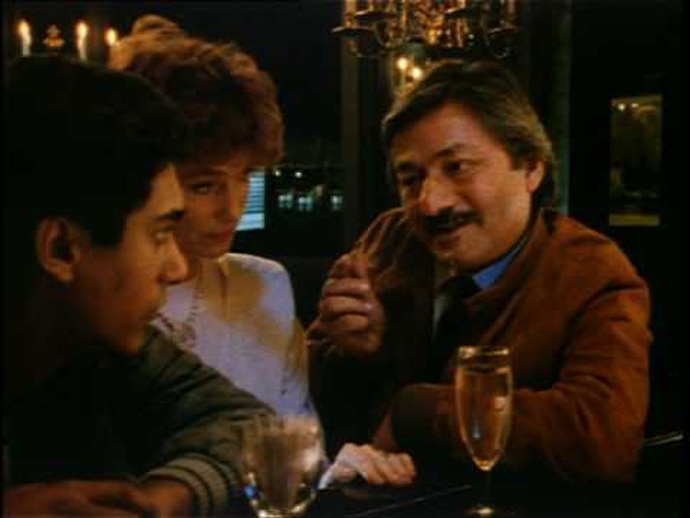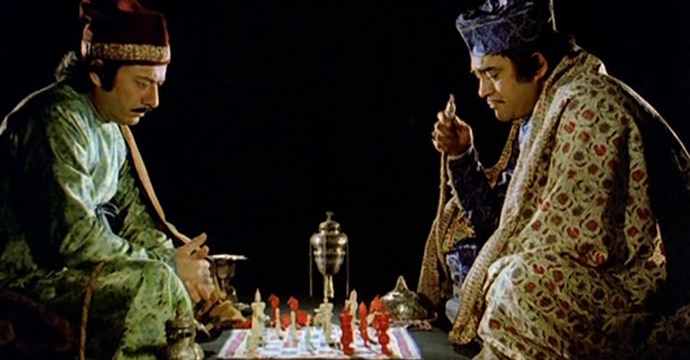Remembering Saeed Jaffrey, India's original crossover actor

Before he became one of the most recognisable Asian actors in the West, hard times had forced Saeed Jaffrey to work as a salesman at Harrods in London. For an actor who was one of the first Asians to travel the US with a Shakespeare company and even broke new ground on Broadway where he appeared in the 1958 adaptation of a Passage to India, Jaffrey, of course, found the part-time job unbearable. On occasions, when some former co-star such as Ingrid Bergman walked in, he'd simply pretend to be a customer. Jaffrey wasn't the kinds who would duck in odd situations. In fact, the once renowned womaniser was caught in bed by a young white man whose wife was, to put it mildly, cheating on him with the actor but instead of cowing down the comparatively diminutive Jaffrey sermonised the man in his half-naked state for calling his wife names.
Born in 1929 in Malerkotla, Punjab, Jaffrey studied at the Aligarh Muslim University and later Allahabad University but was always interested in cinema. He would watch the early classics and later do wonderful impersonations of the stars of the day for his friends and ultimately got his first break on All India Radio. Jaffrey started his own theatre production company in Delhi a few years after Partition and this is where he met Mehrunima, whom he married while they were 19 and 17 respectively. Having witnessed the colonial culture, the shadow of the Raj had a deep impact on Jaffrey and he tried to imbibe the British culture in everything he did. He dressed fancy and spoke Queen's English and using his Fulbright scholarship ultimately convinced Mehrunima to shift to New York. Once in the US, Jaffrey found that there were hardly any decent roles for Asians but his persistence paid off and he did get more than walk-on parts. But more than the work opportunities, Jaffrey was taken in by the freedom of the western society and ended up having a series of affairs. He ultimately left Mehrunima, who later remarried and changed her name to Madhur Jaffrey as she went on to become one of the most celebrated chefs in the world.
 |
| Saeed Jaffrey in Stephen Frear's My Beautiful Laundrette. |
Post his divorce, Jaffrey remarried and moved to London where following a low period that saw him work at Harrods among other things, he managed to become a common face on television. In the 1970s, Jaffrey featured alongside Sean Connery and Michael Caine in John Houston's The Man Who Would Be King (1975) and became one of the first globally recognised Asian faces in acting. Jaffrey always felt that while Hindi and Indian cinema offered him quantitatively more work, the quality of work that would perhaps do justice to his calibre would only be possible in the West. Although there is a great deal of truth in that claim, it isn't as if Indian cinema wasn't fair to him. The popular cinema of the 1970s and later the 1980s, the period where Jaffrey was at his peak, wasn't the kind that could have imagined a Saeed Jaffrey in what would today be called regular roles. Jaffrey, too, often remarked that it was chiefly the "naughty uncle and rich daddy" parts that dominated his stint in India. Yet he got a Shatranj Ke Khiladi (1978) that saw him collaborate with Satyajit Ray and even fetched him a Filmfare Award for Best Supporting Actor. But, the role that he is most associated with and one that to bring a smile on the faces on just about anyone who follows Hindi cinema is the one he played in Chasme Buddoor (1981). It would have been hard for director Sai Paranjape to imagine the otherwise suave Jaffrey as the local Dilli paanwaala with a heart of gold, but once you saw him as Lalan Miya it became so enshrined that even after three decades it's impossible to picture anyone else in the iconic role.
 |
| Saeed Jaffrey with Sanjeev Kumar in Satyajit Ray's Shatranj Ke Khiladi. |
Some of his celebrated films include Gandhi (1982) where he played Sardar Vallabhbhai Patel, Masoom (1982), Mashaal (1984), Saagar (1985), Ram Teri Ganga Maili (1985), Khudgarz (1987), Dil (1990), Henna (1991), and Judaai (1997). Jaffrey continued to balance working in the UK and US along with Hindi cinema and is fondly remembered for The Far Pavilions (1984), Jewel in the Crown (1984), Tandoori Nights (1985-87) and Coronation Street (1999). Perhaps when Saeed Jaffrey started his career he wouldn't have imagined that he would work with a John Houston, a Richard Attenborough, a Satyajit Ray, and a David Lean. But more than that, Jaffrey's biggest achievement has been in opening up the world that many Asian actors who followed him would have found almost impossible to be a part of. The first Asian actor to be awarded an OBE, it wouldn't be incorrect to say that Jaffrey not only blazed the trail for a generation of brown performers but also made things easier for them.
More than a fine actor, Jaffrey was a regular human being who understood that life is a mix of the good and bad. Unlike many actors who often tend to entertain delusions of grandeur about themselves, Jaffrey acknowledged his shortcomings and never fooled himself. A few days before his death an old letter from Jaffrey's personal diary surfaced on the Internet and the poignant manner in which he admonishes himself for ill-treating and cheating on his first wife, Madhur, then Mehrunima reveals how he fell prey to success and undervalued the most beautiful thing in his life. He recalls how his children told him that their stepfather, the man Madhur married, knew the meaning of true love and never tried to change their mother. There are many brilliant actors and many honest human beings, but Saeed Jaffrey was both.

